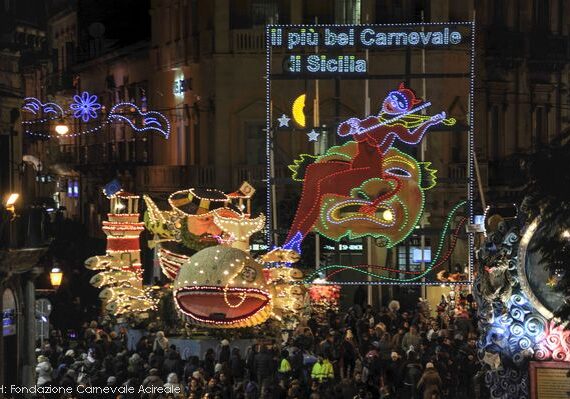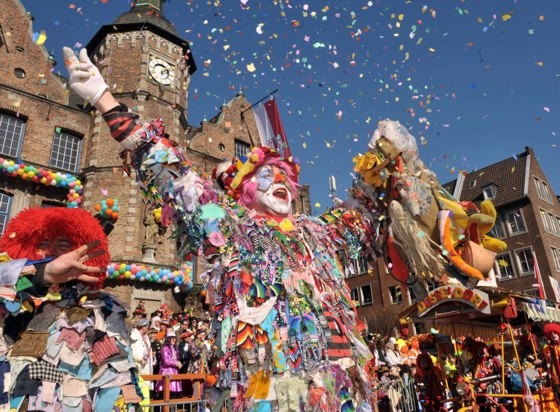This article is also available in: Italiano
Hello Going Expat people,
Back to talk about some traditions, and we do so with the par excellence party: Carnival!
Carnival is a colorful and festive festival celebrated all over the world, each with its own unique traditions.
Where does the Carnival tradition come from?
The origin of the Carnival tradition is complex and has deep historical roots that date back to ancient times. Carnival celebrations are often associated with the period preceding Lent, a period of fasting and renunciation observed in the Christian tradition.
But let’s go into more detail and better discover its roots:
- Pagan origins: Some scholars believe that carnival has roots in ancient pagan festivals linked to the changing of the seasons and the celebration of soil fertility. Pagan festivals often involved masks, disguises and wild celebrations.
- Pre-Lent celebrations: The word “carnival” comes from latin “carnelevare” or “carnelevarium”, which means “rimuovere la carne” (remove the meat). This refers to the fact that the carnival takes place before the period of abstinence of Lent, during which traditionally the consumption of meat and other pleasures were renounced.
- Christian religious holidays: In the Middle Ages, carnival celebrations became an integral part of the Christian calendar. In many communities, especially in Europe, carnival was a time when rigid social hierarchies could be temporarily overturned through the play of masks and inverted identities.
- Cultural influences: Over time, the carnival has been influenced by different cultures and traditions, taking on specific characteristics in different countries. For example, the Venice Carnival is famous for its elaborate masks and sense of mystery, while the Rio de Janeiro Carnival in Brazil is known for its samba parades and liveliness.
In short, the Carnival has roots that are intertwined with ancient pagan celebrations, pre-lenten Christian traditions and cultural influences, creating a multiform festival that has evolved over the centuries in different parts of the world.
In this article we will talk about Carnival celebrations in some countries, starting from the most closest to me:
Carnival in Italy.
In general, Carnival in Italy is characterized by colorful parties, creative costumes, music, traditional food and an atmosphere of fun and joy. Each region has its own specific traditions and peculiarities, but the common essence is to celebrate before the Lent period with joy and celebration.
- Carnival of Venice: Perhaps the most famous and iconic Italian carnival, the Venice Carnival is known for elaborate masks, lavish costumes and festivities along the canals of Venice. Masks, like the famous Venetian mask, have become distinctive symbols of this carnival.
The first official document declaring the Carnival of Venice a public holiday is an edict of 1296, when the Senate of the Republic declared a public holiday the day before Lent.
The Carnival traces its origins to the Middle Ages, existing for several centuries until it was abolished in 1797. The tradition was revived in 1979, and the modern event now attracts approximately 3 million visitors annually. (Wikipedia)
- Carnival of Viareggio: Located in Tuscany, the Viareggio Carnival is famous for its huge decorated floats and parades along the promenade. Floats often depict political characters, celebrities, or satirical themes.
- Carnival of Ivrea: In the town of Ivrea, in Piedmont, there is a unique tradition known as the “Battle of the Oranges”. People divide into teams and throw oranges at each other in a sort of symbolic “war”.
Every year the citizens remember their liberation with the “Battle of the Oranges”, where teams of aranceri (orange handlers) on foot throw oranges (representing old weapons and stones) against aranceri riding in carts (representing the tyrant’s ranks) (Wikipedia)
- Carnival of Putignano: Located in Puglia, the Putignano Carnival is one of the oldest carnivals in Italy. Celebrations include parades of floats, theatrical performances and musical events.
- Carnival of Cento: In Emilia-Romagna, the Carnival of Cento is known for the traditional masks called “mascarùt” and for the parade of floats.
- Carnival of Acireale: In Sicily, the Carnival of Acireale is famous for its parades of floats decorated with flowers and paper mache. Celebrations also include parades of masked groups and musical performances.

Carnival in the Netherlands.
In the Netherlands, Carnival is celebrated under the name “Carnaval” or “Vastenavond”. The celebrations vary in different regions, but in general, parades, masked parties and musical events take place. The regions of Limburg and North Brabant are particularly known for their lively festivities, with locals and visitors wearing colourful costumes and participating in festive processions.
Also here as in Italy, during the Carnaval, it is common to see floats representing satirical or traditional themes.
The cities during Carnival change name, replacing it with a playful and representing some characteristic of the city itself.
The preparation starts already from November, the 11th to be precise, when the “Prince of Carnival” of the year is elected and then the last days of January will be proclaimed. On 11 November the Prince also meets the “Council of the Eleven” (Raad Van Elf) that is made by those who are responsible for organizing the event. 11 is a number that constantly returns to the Dutch Carnival. In fact it is also the number of fools/ buffoons and 11 are the shots of cannon that are fired in the square to kick off the celebrations.

There is another Carnival in the Netherlands, which is celebrated in Rotterdam in the summer. A carnival in Caribbean tones called Zomercarnaval (Summer Carnival). In this case the protagonists are King, Queen and dances.
The carnival of Rio de Janeiro.
You can’t talk about Carnival without mentioning Brazil.
The parades of the Sambodromo of Rio de Janeiro are the centerpiece of the celebrations, with the samba schools presenting elaborate choreographic performances and allegorical floats. Participants wear luxurious and colorful costumes, and the party involves millions of people in the street.
In addition to the large official parades, the Brazilian carnival involves a multitude of small groups known as “blocos” and “cordões”. These are informal parades that move through the streets playing music, dancing and involving the crowd.
Fasching, the carnival in Germany.
It is a very popular festival involving many cities and regions of the country. Fasching celebrations have deep roots in German culture.
Also here we find parades and floats that are often decorated in an elaborate way and present satirical themes, political or traditional. The parades involve masked groups, bands and festive participants.
There are two particularly important days during Fasching:
- Rosenmontag (Rose Monday): On this day, large carnival parades take place in many German cities. People gather to watch the parades, throw candy and enjoy the festive atmosphere.
- Jugendweihe (Youth Oath): In some regions of eastern Germany, the Fasching is associated with the Jugendweihe, a ceremony of transition to adulthood.

Carnival of New Orleans, USA.
Mardi Gras in New Orleans is probably the most well-known carnival in the United States. The celebration reaches its climax on Shrove Tuesday, the day before the beginning of Lent. Featuring parades of floats, elaborate costumes, music and street festivities, Mardi Gras in New Orleans attracts thousands of visitors each year.
There are other North American cities where Carnival is celebrated.
For example, we have Mobile in Alabama, Galveston in Texas. Also San Diego in California and St.Louis in Missouri
Carnival celebrations in the United States are often influenced by local cultural traditions and can vary significantly from one region to another. While some cities follow traditions similar to those of European carnivals, others have developed unique celebrations that reflect the country’s cultural diversity.
Do you know other countries where Carnival is celebrated? And you will celebrate it?
I plan to take a trip to North Brabant on Saturday, I’ll tell you about it on my Instagram profile.
I see you there!
Rossella







